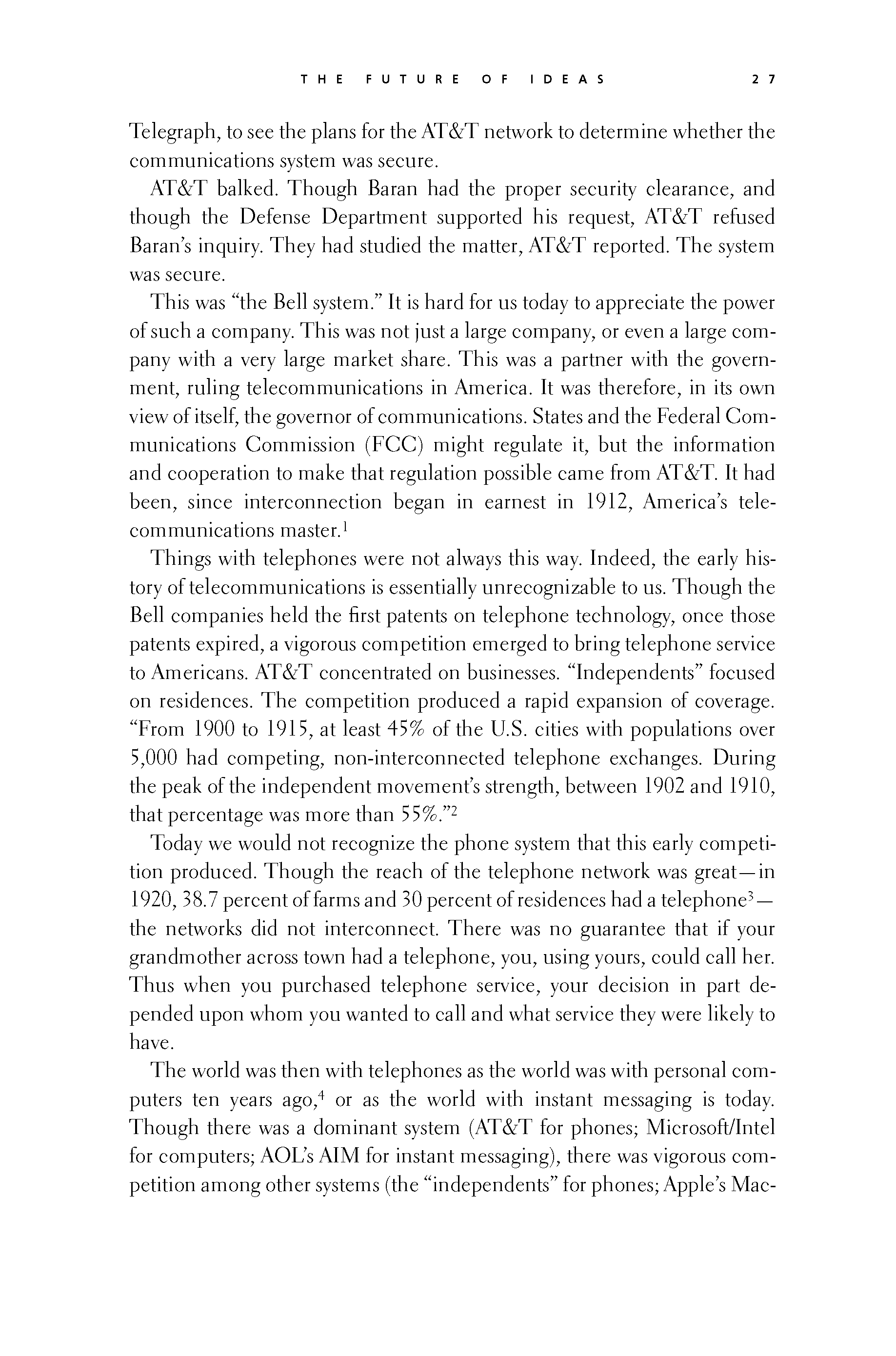 p026 _
-chap- _
toc-1 _
p027w _
toc-2 _
+chap+ _
p028
p026 _
-chap- _
toc-1 _
p027w _
toc-2 _
+chap+ _
p028
Telegraph, to see the plans for the AT&T network to determine whether the
communications system was secure.
AT&T balked. Though Baran had the proper security clearance, and
though the Defense Department supported his request, AT&T refused
Baran's inquiry. They had studied the matter, AT&T reported. The system
was secure.
This was "the Bell system." It is hard for us today to appreciate the power
of such a company. This was not just a large company, or even a large com-
pany with a very large market share. This was a partner with the govern-
ment, ruling telecommunications in America. It was therefore, in its own
view of itself, the governor of communications. States and the Federal Com-
munications Commission (FCC) might regulate it, but the information
and cooperation to make that regulation possible came from AT&T. It had
been, since interconnection began in earnest in 1912, America's tele-
communications master.[3-1]
Things with telephones were not always this way. Indeed, the early his-
tory of telecommunications is essentially unrecognizable to us. Though the
Bell companies held the first patents on telephone technology, once those
patents expired, a vigorous competition emerged to bring telephone service
to Americans. AT&T concentrated on businesses. "Independents" focused
on residences. The competition produced a rapid expansion of coverage.
"From 1900 to 1915, at least 45% of the U.S. cities with populations over
5,000 had competing, non-interconnected telephone exchanges. During
the peak of the independent movement's strength, between 1902 and 1910,
that percentage was more than 55%."[3-2]
Today we would not recognize the phone system that this early competi-
tion produced. Though the reach of the telephone network was great -- in
1920, 38.7 percent of farms and 30 percent of residences had a telephone[3-3] --
the networks did not interconnect. There was no guarantee that if your
grandmother across town had a telephone, you, using yours, could call her.
Thus when you purchased telephone service, your decision in part de-
pended upon whom you wanted to call and what service they were likely to
have.
The world was then with telephones as the world was with personal com-
puters ten years ago,[3-4] or as the world with instant messaging is today.
Though there was a dominant system (AT&T for phones; Microsoft/Intel
for computers; AOL's AIM for instant messaging), there was vigorous com-
petition among other systems (the "independents" for phones; Apple's Mac-
[[27]]
p026 _
-chap- _
toc-1 _
p027w _
toc-2 _
+chap+ _
p028